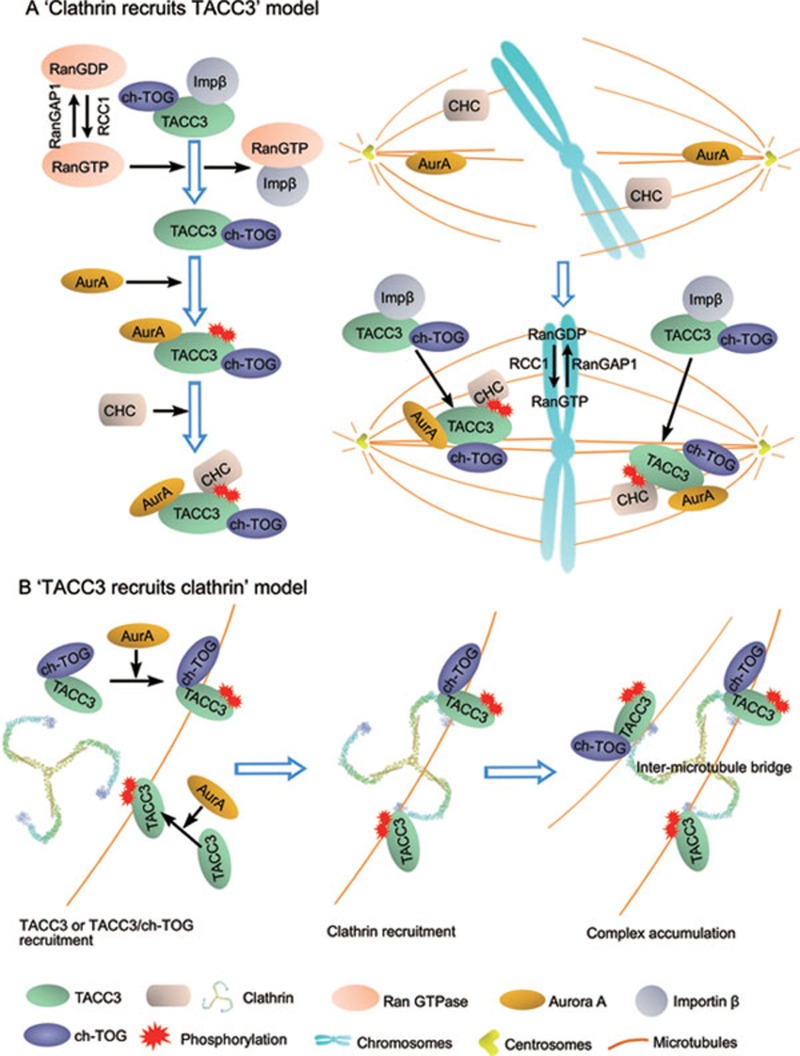Figure 1.
Clathrin-TACC3 complex regulates mitotic spindle assembly. Two models describing the function of clathrin-TACC3 complex in mitotic spindle assembly. (A) The 'clathrin recruits TACC3' model. The conversion between GTP-bound and GDP-bound states of Ran GTPase is ensured by guanine nucleotide exchange factor RCC1 and Ran GTPase activating protein RanGAP1. When the cell enters mitosis, RanGTP is generated by RCC1 around the chromosomes. Through specific binding of RanGTP with importin-β, TACC3, one of the spindle assembly factors (SAFs), is released from the inhibitory binding with importin β. Then, Aurora A kinase activates the released TACC3 by phosphorylating it at two sites (Ser620 and Ser626 in Xenopus) and enables it to bind with clathrin to form the clathrin-TACC3 complex. Finally, the clathrin-associated TACC3 is targeted to spindle poles and spindle microtubules for proper spindle assembly. Along with TACC3, ch-TOG also targets to spindles to regulate spindle stability. (B) The 'TACC3 recruits clathrin model'. First, TACC3 alone or complexed with ch-TOG is recruited to the spindle microtubules in a phosphorylation-dependent manner regulated by Aurora A. Then, clathrin is recruited to the spindle by the spindle microtubule-localized TACC3 or TACC3/ch-TOG. Finally, a clathrin molecule forms an inter-microtubule bridge by interacting with additional TACC3 or TACC3/ch-TOG on adjacent microtubules to stabilize the spindle microtubules.

